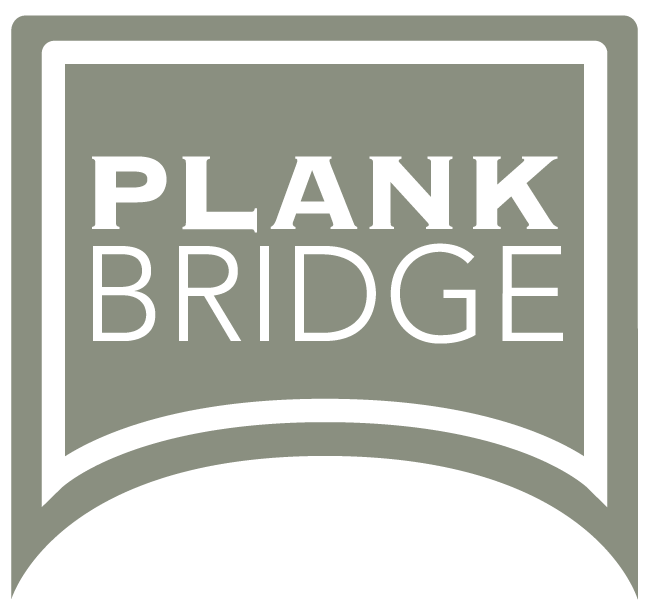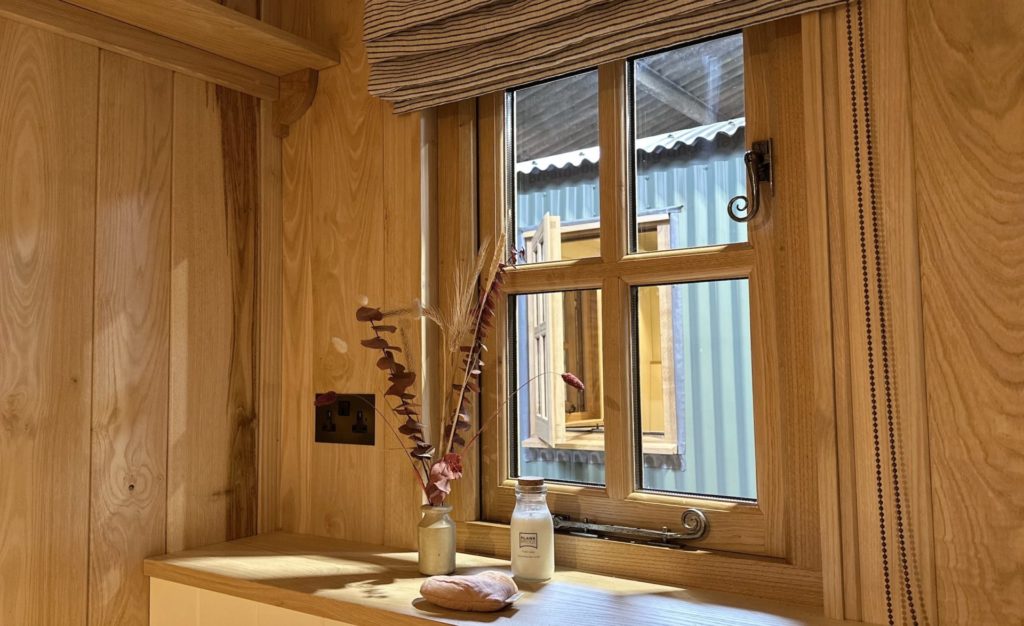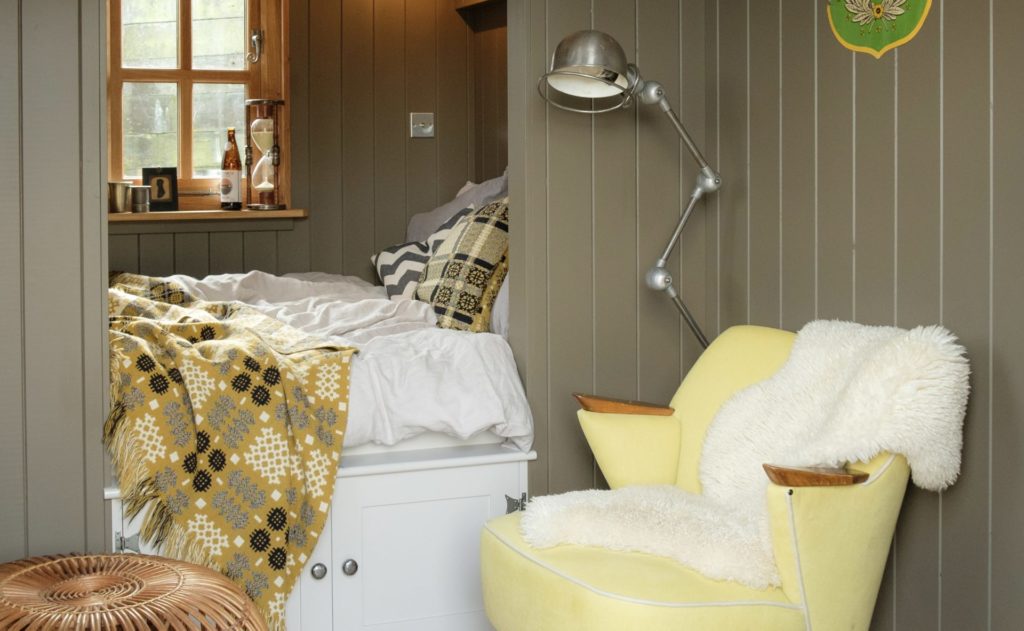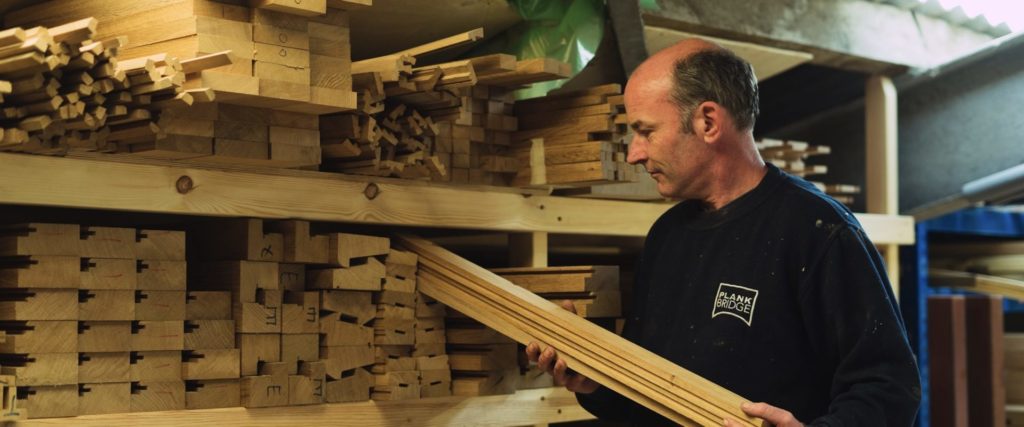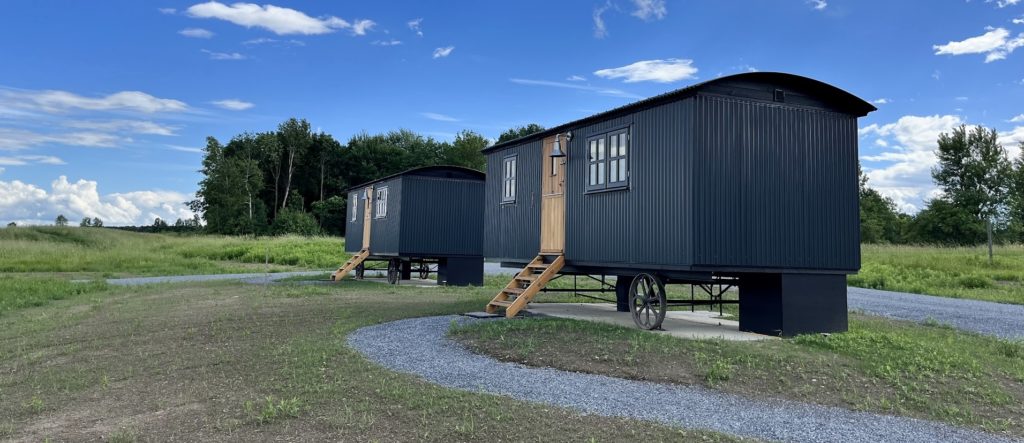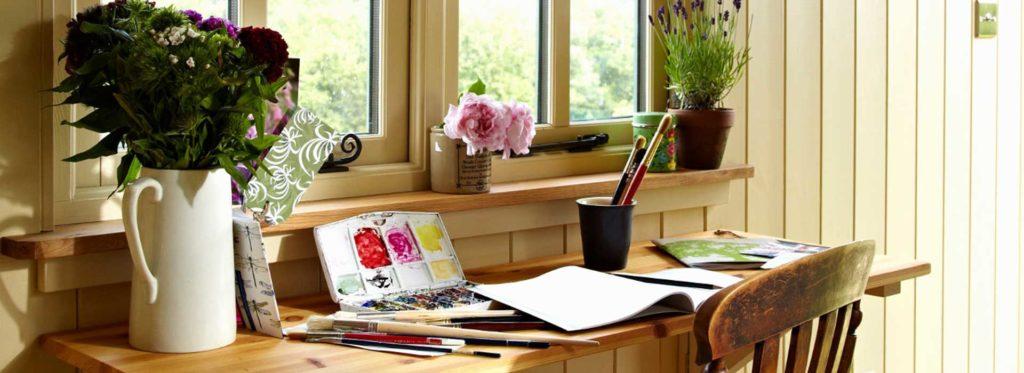The Construction of a Shepherd’s Hut Roof
The curved roof of the shepherd’s hut as we know it today came into being in the mid 1800’s. Once corrugated iron was invented it wasn’t long before they realised they could roll the sheets into curves. And curved corrugated sheets are very strong. These roof curves were utilised to make wide expanses of curved roofs to cover the docks on the Thames. Vast quantities of goods were arriving by ship from around the World, and the goods needed unloading into covered space.
This new-fangled material would have been very attractive to engineers and blacksmiths who wanted a durable and relatively simple way to cover over a range of more agricultural structures. From shepherd’s huts to keeper’s huts, portable granaries and cart sheds, curved corrugated sheets would have been seen across the country. They were later utilised on the now common Dutch barns.
How we make a roof
We have our roof sheets rolled to the profiles we need, the Snug size is based very much on the curve of the Victorian original shepherd’s hut, the Cabin size is wider and a lower profile. We go wider still for the roof of huts such as the Garden Wagons for the Pig Hotel.
Corrugated sheets can be in plain galvanised, a factory polyester paint or plastisol finish. Once up there it wants to be the most durable and least maintenance option, unless you want a unique colour in which case it will need to be painted.
There does seem to be a shortage of steel sheet, and therefore prices are rising for rolled corrugated, to at least twice as much at the time of writing.
The roof of shepherd’s huts on the Southern downlands were nearly always curved, but as you head more towards Suffolk and Norfolk you see more pitched roofs. I suppose in the open Breckland a taller pitched roof wasn’t such a constraint as it would be on the tree lines lanes and tracks of the Southern counties. Such pitched roofed shepherds huts do have a different character. We restored one once and it went on to be used by a famous film and TV puppeteer!
One potentially vulnerable spot is the exit hole for the wood burner flue. It’s important to make a weather tight seal, and an Australian roof flashing does the best job. Black rubber for twin wall flue, red rubber for hotter single skin flue. The flashing contours to the corrugated ridges and troughs, and is sealed with a high quality sealant and fixed with roof screws. Early huts didn’t have such modern solutions, and often relied on a cast iron block which was cast to the shape of the pipe and the corrugations. It was always a weak spot on old shepherd’s huts, watch out for this when looking at an old original.
These days we also fit curved double glazed roof lights for watching the night sky and the clouds rolling by. Velux windows can also be fitted.
There are various methods of fixing the roof and wall sheets. We use Tek screws, with a small rubber sealing washer and covered with a black plastic cap. Traditionalists may use a twist nail with a domed head. Whatever is used it needs to make the least amount of holes to do a secure job, and the roof will last for many, many years.
